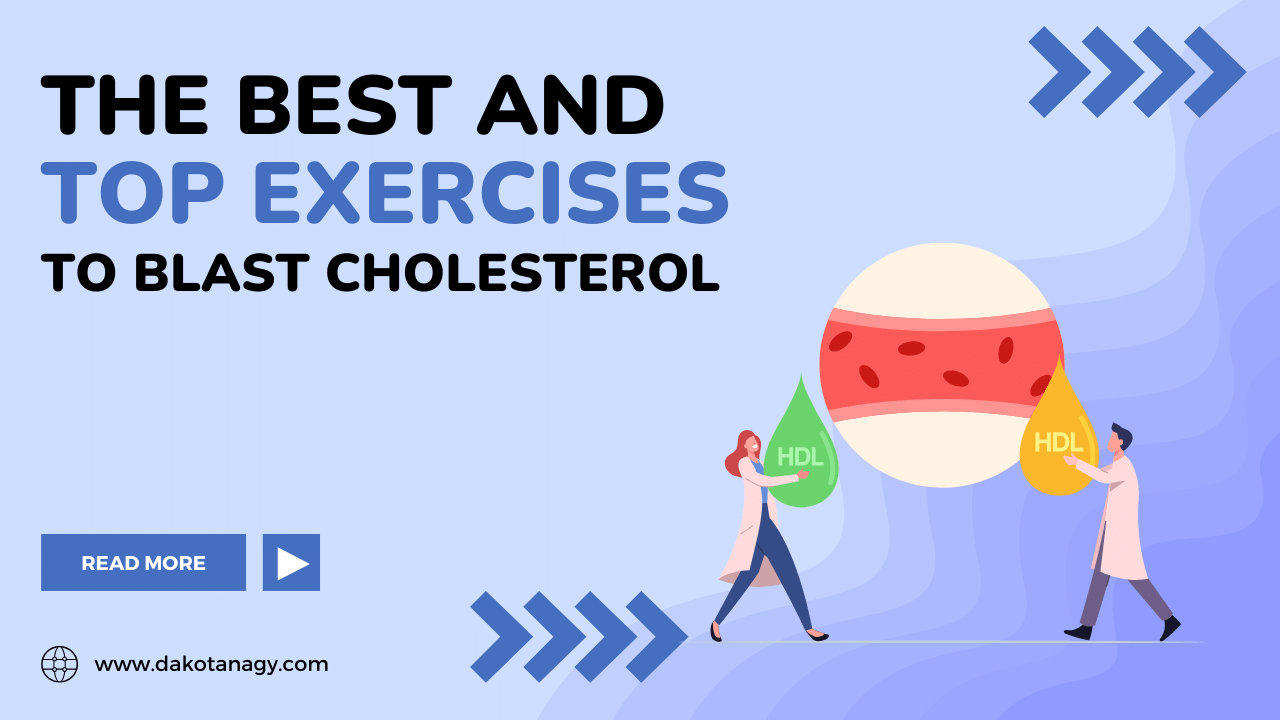Cholesterol Conquest: Top Exercises to Blast Away Bad Cholesterol!

Did you know that nearly half of all adults in the US have high cholesterol, a major risk factor for heart disease? Cholesterol is a waxy substance found in your blood. There are two main types: LDL (often called "bad" cholesterol) and HDL (often called "good" cholesterol).
While you might wonder which exercises are most effective in fighting high cholesterol, we've got you covered! Let's explore fantastic exercise options to help lower your LDL and boost your HDL for a healthier heart.
Aerobic Exercise for the Win
When it comes to lowering LDL, aerobic exercise takes center stage!
Activities like brisk walking, swimming, or cycling increase your heart rate and promote healthy blood flow. This encourages your liver to remove LDL particles from your bloodstream, reducing plaque build-up and causing artery blockages.
Aim for at least 150 minutes of moderate-intensity aerobic exercise or 75 minutes of vigorous-intensity exercise per week.
Resistance Training for a Double Whammy
Strength training isn't just about building muscle! It can also be a powerful tool for managing cholesterol. Resistance training, which can include bodyweight exercises or weight lifting, helps build muscle mass.
This increased muscle mass helps your body burn more calories overall, which can indirectly contribute to lower LDL levels. Additionally, some studies suggest resistance training can positively impact your HDL levels, giving your body a double advantage in the fight for healthy cholesterol.
Variety is Key for Optimal Results
If you wish to manage your cholesterol levels effectively, it is highly recommended that you incorporate both aerobic and resistance training into your daily routine. This combined approach offers a well-rounded solution that can maximize the benefits of both your LDL and HDL levels.
Aerobic training, like running or cycling, can help boost cardiovascular health and lower bad cholesterol levels in the blood. Resistance training, on the other hand, can help you build muscle mass and increase your metabolism in the long term, thus improving your overall health.
In addition to these, you can also try activities like yoga or Pilates, which can enhance your flexibility, core strength, and balance, ultimately leading to a healthier and more active lifestyle.
Conclusion
It's important to understand that no exercise can magically lower your cholesterol levels.
Aerobic exercises such as running, swimming, or cycling can help improve cardiovascular health, while resistance training, such as lifting weights, can help build muscle mass and increase metabolism. By incorporating a combination of both aerobic and resistance training into your routine, you can significantly improve your cholesterol profile.
It's important to note that consistency is key, and even small changes in your exercise habits can yield big results. However, if you have any pre-existing health conditions, it's important to consult your doctor before starting a new exercise program.
Your doctor can help you create a safe and effective plan that considers any limitations or concerns. They can also monitor your progress and adjust as needed to ensure you achieve your goals without compromising your health.
Working with your doctor and making exercise a regular part of your routine can lower cholesterol levels and improve overall health.
Have you seen a positive impact on your cholesterol levels since starting to exercise? Tell us your story!